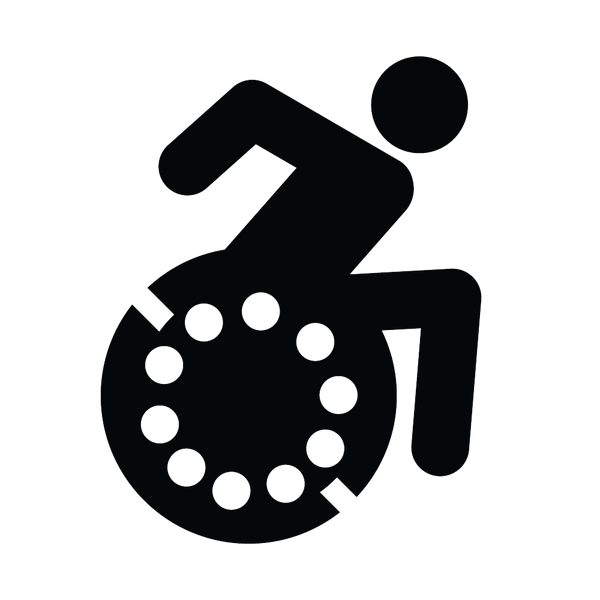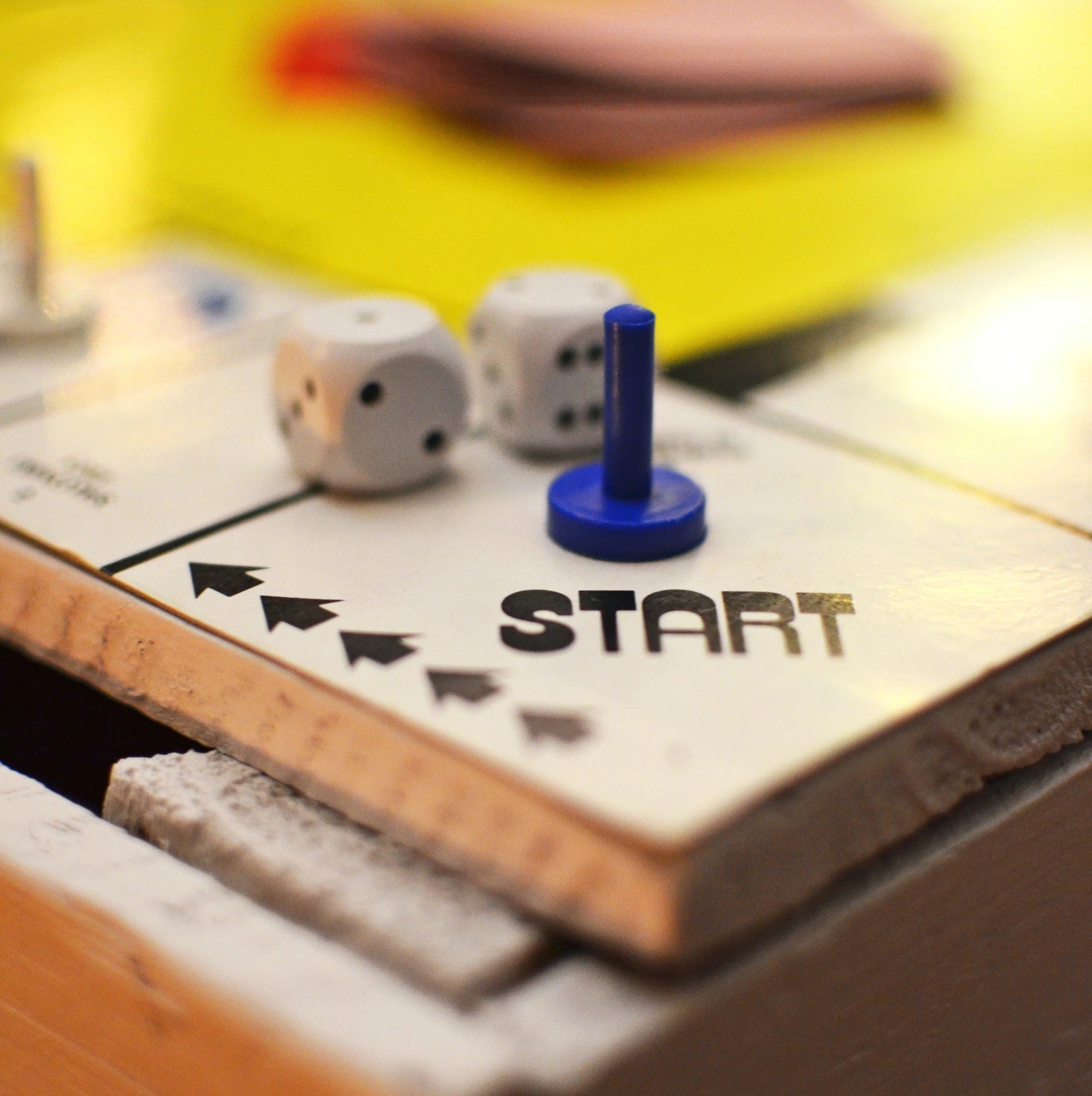Wheelchair Wheels: What You Need To Know For Performance Purposes
To really understand the effects of a wheelchair wheel on performance, you need to understand these factors:
- Wheel Diameter
- Spoke Lacing
- Hub Type and Size
- Tire Tread and Material
- Solids, Inner Tube, Inserts
- Axle Diameter
Wheel Diameter
Most wheelchairs use a 24" wheel. However, when you survey pediatric wheelchairs all the way to sports wheelchairs, you will find a wide range of sizes from 20" to 27" wheels.
The larger the diameter of the wheel, the farther each push will take you. On the flip side, the smaller the diameter of the wheel, the easier it is to start your first push. This is why, for example, you see kids with tiny wheels, because they may not have the strength to start a bigger wheel. Using that same example, if you took that smaller wheel and used it for a basketball wheelchair, that kid would get tired quickly because they were pushing so much.
For everyday use: most adults who use a wheelchair full-time tend to prefer a 25" wheel for everyday use as it gives the best balance between long rolls and a fast start.
For sports use: a 25" or 26" wheel is used to give you a longer roll. For example, someone pushing a 26" will get 6" more travel from a push than from a 24" wheel. A larger wheel will get you down the court much faster.
Spoke Lacing
There are two ways you can lace a wheelchair wheel. The first and most common is radial lacing. This means that the spokes move out from the inner hub and connect to the rim without crossing at all. The second way is a cross-laced spoke, meaning the spokes cross one or a few times before they meet the rim.
Radial Lacing: A radial laced wheel is very strong up and down. That means when you drop off a curb, the wheel is going to be very strong and not deform very much. The problem with radially laced wheels is when the spokes become loose, which happens with older wheels, and you push hard, you can see that the rim will turn first and then the rest of the wheel will catch up. This means that energy is being lost every time you push. The second issue is that they are not strong side to side. So if you have a high degree of camber (mainly sports chairs) then your wheel is deforming as you push also adding to energy loss.
Hub Type and Size
You may already have noticed this but sports wheels tend to have much larger flanges on the sides of the hub. This reduces the flex in the wheel when it is pushed because the spokes are shorter. On an everyday wheel, the hubs tend to be tiny. Tiny looks good but if you are an active or aggressive user, when you push you will lose energy as the wheel deforms.
Hub width, while not a performance factor is another element worth noting here. Originally all hubs had a bearing to bearing spacing of 2.3". This makes for a very stable hub on the axle. Not long ago, a 1.9" wide hub was developed. The upside is your wheelchair is almost an inch narrower, which is great. The downside is that the hub is a little more wobbly when force is applied. That is why you cannot use everyday wheels on a sports chair very well, you just lose too much power.
Tire Tread and Material
Tire tread is the pattern on the actual tire itself. For everyday wheelchair tires, most tread is fairly light-duty and designed for flat, hard, pavement-like surfaces. It will give you a good push on dry surfaces and suck when it is wet. Sports tires have even less tread and are made for courts with dry surfaces. The last type is an off-road tire, which has a knobby pattern on them. The knobs are designed to grab the dirt and give you more traction.
Tire material is the real performance consideration when it comes to tires. The softer the materials, the better grip you will have, but the quicker it will wear out. The harder the material, the longer it will last, but it may be very sticky on a wet surface or leave a mark.
For everyday use: You want a tire that lasts a long time and does not leave black marks on indoor surfaces. The big difference between a bike tire and a wheelchair tire other than tread is that a wheelchair tire must be "non-marring" so it will not leave black streaks all over your floor. Bathrooms are a great testing ground for "non-marring" tires. No matter what the label says the floor will tell the truth.
For off-road use: You want a tread pattern that is designed for low RPM pushing. If you were to put a high-speed mountain bike tire on a wheelchair, two things would happen - you will burn a lot of energy to push, and because bikes are used outdoors they do not care if they leave black marks, so it will mark up your floor.
For sports use: You will want to pick the tire tread and material that is right for your sport. For example, in quad rugby, you want a very thick, harder tire so it does not blow when a defender crashes into you. In tennis, you want a soft tire that will give you the best control; however, it will wear quickly. In basketball, where there is more contact, you will want a thicker tire with softness to get traction that will also last through each hit.
Tire Inflation Solids, Inner Tube, Inserts
When it comes to tire inflation, air is king. Most wheelchair users will want the hardest tire possible. This provides the least surface area contact with the ground, requiring the least amount of energy to push.
The downside to air is that the inner tube will leak and even can pop easily. This means more maintenance, including a regular need to re-fill the tire. Two solutions were developed to avoid this problem.
The solid tire is an all-rubber tire that has no inner tube. These do not go flat and the tread lasts forever. There are a number of drawbacks. They are soft, so they require more energy to push. They are also very heavy, adding to the weigh pushed. Additionally, they can be very hard to put on or replace when needed.
The other solution is the solid insert. This solution fills a regular tire with a solid rubber insert instead of a tube. This is a little lighter than a solid tire and allows you to use the best tires out there without worrying about flats. On the downside, they are softer than air, so you lose energy in the push and they require special tools to replace since you are using a regular tire. These likely will have to be replaced a few times during the lifespan of the chair.
For everyday use: Pick the type that works best for you. The majority of wheels to sold are inner tubes with air
For sports use: Air is king and worth the hassle.
Axle Size
Wheelchair wheel axles come in many different lengths and thicknesses. They range from just under 4" long to over 6" long, and from 12mm all the way up to 1". The length will depend on your hub width and your axle receiver depth. The thickness is most commonly either 1/2" or, for some contact sports like quad-rugby or basketball, 5/8" axles.
If an axle is either too thin or too long it can flex. Flex is bad energy transfer.
For everyday use: The most common is 1/2" thick; larger and or more aggressive users may want to use 5/8" axles.
For Sports use: Most people will use 1/2". Aggressive users and those playing aggressive sports will want to go with 5/8" to avoid a bent axle.
Why do we use a Spinergy X-SLX Sport wheel as our standard sport and everyday wheel at no additional cost to you?When we design a wheelchair for either sports or everyday use, our guiding principle is less energy means more living. When you use an ultralightweight wheel that is not very strong, you burn a lot of energy when the wheel flexes. We wanted a wheel that was lightweight and strong, with great energy transfer, minimal maintenance, and best of all it lasts forever. |
Things to consider about wheelchair wheels:
- Consider the type of wheelchair you have: Different wheelchairs require different types of wheels. For example, manual wheelchairs typically use smaller wheels while power wheelchairs use larger wheels.
- Determine your mobility needs: If you plan on using your wheelchair for outdoor activities or rough terrain, you may want to consider larger, more durable wheels. If you will be using your wheelchair primarily indoors, smaller wheels may be more suitable.
- Look at the tread: The tread of the wheel can affect traction and maneuverability. If you need more traction, look for wheels with deeper treads. If you need more maneuverability, look for wheels with shallower treads.
- Consider the weight of the wheel: The weight of the wheel can affect the overall weight of the wheelchair. Lighter wheels may be more suitable for those who need to lift and transport their wheelchair frequently.
- Think about your budget: Wheelchair wheels can vary in price depending on the type and quality. Consider your budget and choose a wheel that fits within your price range.
Overall, it's important to choose a wheelchair wheel that meets your specific needs and enhances your mobility and independence.

